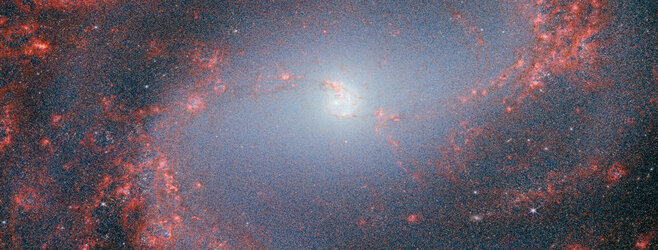Accept all cookies Accept only essential cookies See our Cookie Notice

About ESA
The European Space Agency (ESA) is Europe’s gateway to space. Its mission is to shape the development of Europe’s space capability and ensure that investment in space continues to deliver benefits to the citizens of Europe and the world.
Highlights
ESA - United space in Europe
This is ESA ESA facts Member States & Cooperating States Funding Director General Top management For Member State Delegations European vision European Space Policy ESA & EU Space Councils Responsibility & Sustainability Annual Report Calendar of meetings Corporate newsEstablishments & sites
ESA Headquarters ESA ESTEC ESA ESOC ESA ESRIN ESA EAC ESA ESAC Europe's Spaceport ESA ESEC ESA ECSAT Brussels Office Washington OfficeWorking with ESA
Business with ESA ESA Commercialisation Gateway Law at ESA Careers Cyber resilience at ESA IT at ESA Newsroom Partnerships Merchandising Licence Education Open Space Innovation Platform Integrity and Reporting Administrative Tribunal Health and SafetyMore about ESA
History ESA Historical Archives Exhibitions Publications Art & Culture ESA Merchandise Kids Diversity ESA Brand Centre ESA ChampionsLatest
Space in Member States
Find out more about space activities in our 23 Member States, and understand how ESA works together with their national agencies, institutions and organisations.
Science & Exploration
Exploring our Solar System and unlocking the secrets of the Universe
Go to topicAstronauts
Missions
Juice Euclid Webb Solar Orbiter BepiColombo Gaia ExoMars Cheops Exoplanet missions More missionsActivities
International Space Station Orion service module Gateway Concordia Caves & Pangaea BenefitsLatest
Space Safety
Protecting life and infrastructure on Earth and in orbit
Go to topicAsteroids
Asteroids and Planetary Defence Asteroid danger explained Flyeye telescope: asteroid detection Hera mission: asteroid deflection Near-Earth Object Coordination CentreSpace junk
About space debris Space debris by the numbers Space Environment Report In space refuelling, refurbishing and removingSafety from space
Clean Space ecodesign Zero Debris Technologies Space for Earth Supporting Sustainable DevelopmentApplications
Using space to benefit citizens and meet future challenges on Earth
Go to topicObserving the Earth
Observing the Earth Future EO Copernicus Meteorology Space for our climate Satellite missionsCommercialisation
ESA Commercialisation Gateway Open Space Innovation Platform Business Incubation ESA Space SolutionsLatest
Enabling & Support
Making space accessible and developing the technologies for the future
Go to topicBuilding missions
Space Engineering and Technology Test centre Laboratories Concurrent Design Facility Preparing for the future Shaping the Future Discovery and Preparation Advanced Concepts TeamSpace transportation
Space Transportation Ariane Vega Space Rider Future space transportation Boost! Europe's Spaceport Launches from Europe's Spaceport from 2012Latest

NIRCam’s view of NGC 6822
Thank you for liking
You have already liked this page, you can only like it once!
This image shows the irregular galaxy NGC 6822, as observed by the Near-InfraRed Camera (NIRCam) mounted on the NASA/ESA/CSA James Webb Space Telescope. NIRCam probes the near-infrared, which in this case makes it suitable for observing the densely packed star field.
Webb’s near-infrared NIRCam image shows the galaxy’s countless stars in incredible detail. Here, the dust and gas that pervade the galaxy are reduced to translucent red wisps, laying the stars bare for astronomical study. The power of Webb’s ice-cold infrared instruments and the incredible resolution of its primary mirror is necessary to examine stars hidden in dusty environments, and the results as shown here are spectacular.
The brightest stars appear in pale blue and cyan colours in this image, colours which are assigned to the shortest wavelengths of light that NIRCam can detect: red and nearest infrared. The amount of light emitted by any star decreases at longer and longer wavelengths, towards the mid-infrared, so the stars that are more faint to NIRCam also appear more warmly coloured here. A bright blue orb to the lower left of the gas is particularly prominent: this is a globular cluster, packed with stars.
A composite image of NGC 6822 featuring data from both NIRCam and Webb’s Mid-InfraRed Instrument (MIRI) was published for the ESA/Webb Picture of the Month series in July 2023.
[Image Description: A huge, dense field completely filled with tiny stars. A few of the star images are a bit larger than the rest, with visible diffraction spikes; two foreground stars are large and bright on the right side. Many small galaxies within various shapes and sizes can be seen hiding behind the stars. In the centre some faint, wispy, dark red gas appears.]
-
CREDIT
ESA/Webb, NASA & CSA, M. Meixner -
LICENCE
ESA Standard Licence

No tricks, just treats (M83 NIRCam image)

Cartwheel Galaxy (NIRCam and MIRI)

Zooming in on three neighbouring galaxies (NIRCam image)

A close-in view of three neighbouring galaxies (NIRC…















 Germany
Germany
 Austria
Austria
 Belgium
Belgium
 Denmark
Denmark
 Spain
Spain
 Estonia
Estonia
 Finland
Finland
 France
France
 Greece
Greece
 Hungary
Hungary
 Ireland
Ireland
 Italy
Italy
 Luxembourg
Luxembourg
 Norway
Norway
 The Netherlands
The Netherlands
 Poland
Poland
 Portugal
Portugal
 Czechia
Czechia
 Romania
Romania
 United Kingdom
United Kingdom
 Slovenia
Slovenia
 Sweden
Sweden
 Switzerland
Switzerland

























